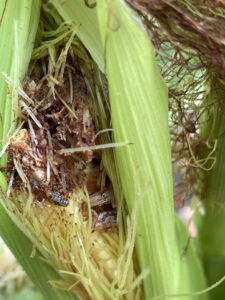Corn Earworm Populations Are Heavy in Corn. What Does That Mean for Cotton and Soybean?
go.ncsu.edu/readext?872084
en Español / em Português
El inglés es el idioma de control de esta página. En la medida en que haya algún conflicto entre la traducción al inglés y la traducción, el inglés prevalece.
Al hacer clic en el enlace de traducción se activa un servicio de traducción gratuito para convertir la página al español. Al igual que con cualquier traducción por Internet, la conversión no es sensible al contexto y puede que no traduzca el texto en su significado original. NC State Extension no garantiza la exactitud del texto traducido. Por favor, tenga en cuenta que algunas aplicaciones y/o servicios pueden no funcionar como se espera cuando se traducen.
Português
Inglês é o idioma de controle desta página. Na medida que haja algum conflito entre o texto original em Inglês e a tradução, o Inglês prevalece.
Ao clicar no link de tradução, um serviço gratuito de tradução será ativado para converter a página para o Português. Como em qualquer tradução pela internet, a conversão não é sensivel ao contexto e pode não ocorrer a tradução para o significado orginal. O serviço de Extensão da Carolina do Norte (NC State Extension) não garante a exatidão do texto traduzido. Por favor, observe que algumas funções ou serviços podem não funcionar como esperado após a tradução.
English
English is the controlling language of this page. To the extent there is any conflict between the English text and the translation, English controls.
Clicking on the translation link activates a free translation service to convert the page to Spanish. As with any Internet translation, the conversion is not context-sensitive and may not translate the text to its original meaning. NC State Extension does not guarantee the accuracy of the translated text. Please note that some applications and/or services may not function as expected when translated.
Collapse ▲Corn earworm (aka bollworm, podworm, tomato fruitworm) populations are much higher in corn than usual. Corn is a nursery crop for this pest and high populations in corn generally mean high populations later in the season for crops like cotton, sorghum, soybean. However, many other things can influence corn earworm survival, as they must complete development on corn, pupate in the soil, emerge, mate, and survive and develop on those crops during July and August. Therefore, while high pressure in corn is no guarantee that pressure will be heavy in other crops, we just need to think back to 2016. Heavy populations and high survival on Bt corn during 2016 year translated into major challenges in cotton. 2022 is shaping up the same so far. Read on to find out why and what should be done.
Why are we seeing this?
With all the work done on corn earworm, we still do not understand their biology enough to answer this question. Corn earworm populations tend to be higher after cold winters and drier springs and summers. While the winter was not cold, we certainly have had some dry weather in some parts of the state. I’ve also noticed that corn earworm populations tend to be heavier in drought-stressed corn.
One (of many) reasons we are seeing an uptick in populations is due to increasing Bt resistance. Corn earworm is resistant to the Bt toxins produced by all corn hybrids except those in Agrisure Viptera, Leptera, and Trecepta (if you find earworms in hybrids with those trade names, please contact your local Extension representative). Bt corn has had a suppressive effect on populations, actually reducing injury in areas where more corn was planted. However, Bt resistance is increasing over time and we can expect that injury in corn and population numbers will increase as well.
What should I do in corn?
Nothing. Corn earworm does not cause yield loss in timely planted corn (demonstrated in Alabama, North Carolina and South Carolina, and across the Midsouth). One of the reasons is that corn ears can compensate for corn earworm feeding (usually confined to the tip- see photo at the top of the article) by filling out kernels heavier near the bottom of the cob. This is one of the reasons why non-Bt refuge hybrids with good genetics yield so well when planted on time.
However, compensation has its limit. At around 50 damaged kernels, the plant can no longer compensate. We see these situations where multiple larvae are in the ear or when fall armyworm is also present. This is more common in later planted corn. Even in these situations, foliar insecticides will not impact populations and should not be used for corn earworm in field corn (many sweet corn growers spray every day for weeks to try to eliminate corn earworm).
What should I do to prepare for cotton, sorghum, and soybean?
Pay close attention to the N.C. Cooperative Extension light trap network. This is run by county agents and growers to help us know when to scout and generally comes online each year during July. When trap catches pick up, it’s time to scout other crops that corn earworm will lay eggs in. We will provide guidance via the cotton and soybean portal for control recommendations at that time. Later planted crops will be more at risk.




